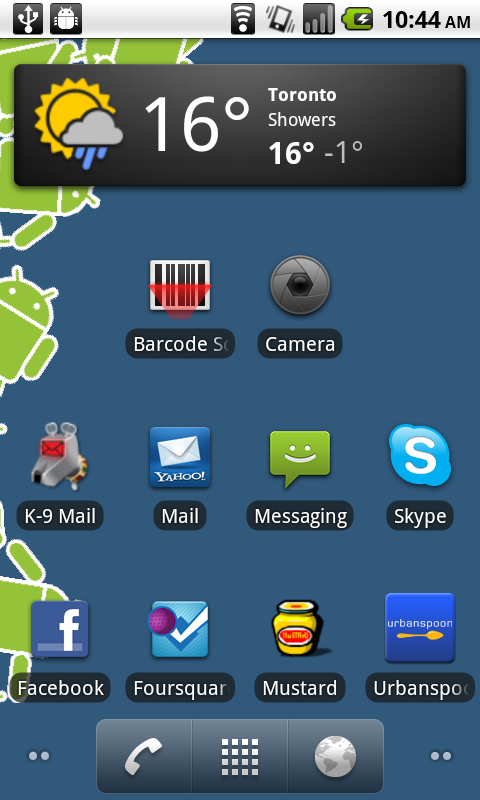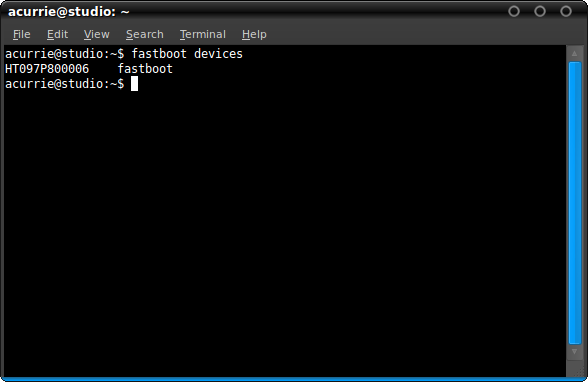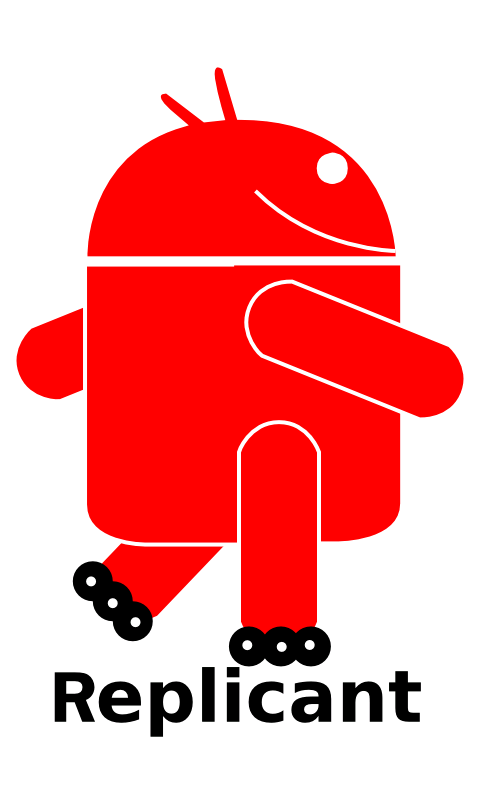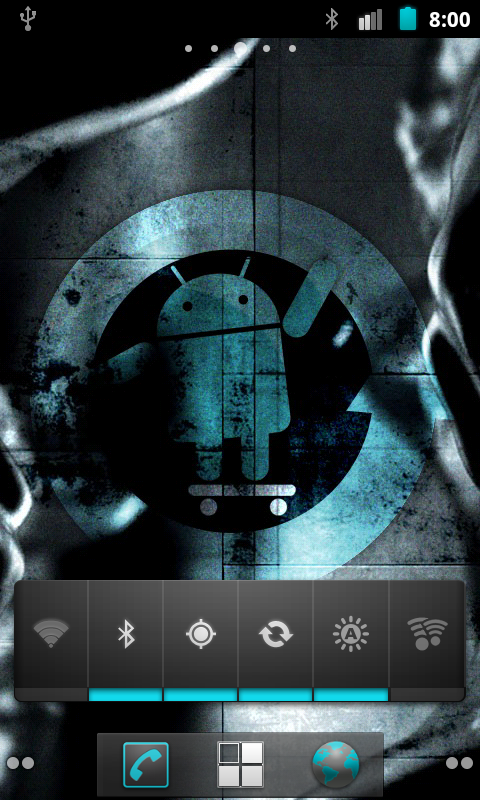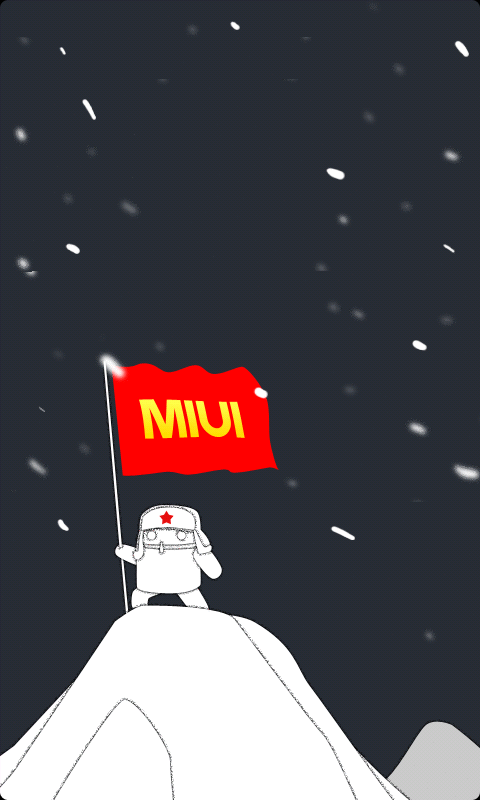My biggest beef was text entry — email and SMS, it seemed, still had their place in this brave new world of mobile computing. The best input solution I could find for my Nexus was an app called Swype, developed by the same brilliant mind behind T9 for number pad phones. And Swype was every bit as clever; the user entered words by flicking their thumb across an on-screen virtual qwerty keypad. The longer the word the more accurate Swype was. More common words were a different story, though; “is” and “if” were often confused, along with “on” and “of”, and just about everything else with less than five letters in it.
It was a frustrating compromise for someone used to physical qwerty — at this point I was even missing the number pad on my N86! So when my new carrier, Mobilicity, released the cheap and cheerful Motorola Spice I got one almost immediately. In fact, at one point I had two.
Here, for less than $200 CAD, was a handset that seemed to have it all: Android, a physical qwerty keypad, even the same vertical sliding design as my N86. An unexpected bonus was the trackpad on the back of the phone — very handy for scrolling through web pages without your thumb getting in the way. The only problem, aside from the dreary lo-res fixed-focus camera, was that the MotoSpice was slow. It was to be expected, I guess, that a smartphone selling for less than half the price of the Nexus One would have a processor just over half as fast.
In practice it wasn’t so bad. I discovered that Android scaled quite well to low-powered devices. One key thing was to be patient while processes (apps) were launched. With less available speed and memory the Spice had to figure out how to allocate its meagre resources when something new was added to the mix. That was the slow part, at least for me; once an app was up and running I found the speed to be quite acceptable.
Also key was liberating the Spice from Motorola’s bloatware, and this could only be accomplished through rooting. The Spice was actually the first Android device I ever rooted — sorry to have misled you but yes, I rooted my MotoSpice long before going near the bootloader on my Nexus One. But where the Nexus got a proper unlock, root and custom recovery the hard way my Spice was rooted using a simple tool that did the hard work for me. Once root was obtained it was a simple matter of removing the Android package “Spicy.apk” and I was good to go. I also installed an app that enabled WiFi tethering; that was another feature that the MotoSpice was missing out of the box.
In retrospect I think the Spice was ultimately a transition device between my tactile N86 and my (almost) all-touch Nexus One, even though I got the Nexus first. I used the MotoSpice as my primary phone for a good six months — from December, 2010 to May, 2011. It came with me on a WOM World-sponsored visit to the famous South By Southwest conference and did quite well there; the Spice was never sold in the USA so the other bloggers on that trip had never seen one. It didn’t fare so well on its second conference run, though. At Podcasters Across Borders in May it became quite apparent that my Spice couldn’t keep pace with the iPhones that surrounded it — plus I dropped it in the elevator of my hotel, leaving a noticeable ding that was pretty much a kiss of death.
But the memory of my MotoSpice lives on. I gave mine away to a friend in need, but was fortunate enough to score a dummy model from my local unlocker. Had the Spice as much processing power as higher-end phones I’d probably still be using it today.
]]>
Ah, the MotoSpice… you folks in the US can start being jealous now.
For less than $200 CAD I had it all: Android, vertical slider, physical qwerty keypad… Okay, the camera was crap and the phone was severely underpowered — and it actually ran Android 2.1, which meant no WiFi tethering. Yet despite these obvious flaws the Spice was the only phone I took out the door with me for almost six months.
The Spice was also the first Android device that I successfully rooted, necessary to enable WiFi tethering and get rid of Motorola’s er, “enhancements”.
This cheap and cheerful handset accompanied me to SXSW in March, 2011 and to PAB later that spring. A testament to its durability was that it survived both trips and being dunked into a cup of piping hot coffee — I just needed a bag of uncooked rice to dry it up.
You can read MobileSyrup’s review of the Spice here, and my own posts about it here.
]]>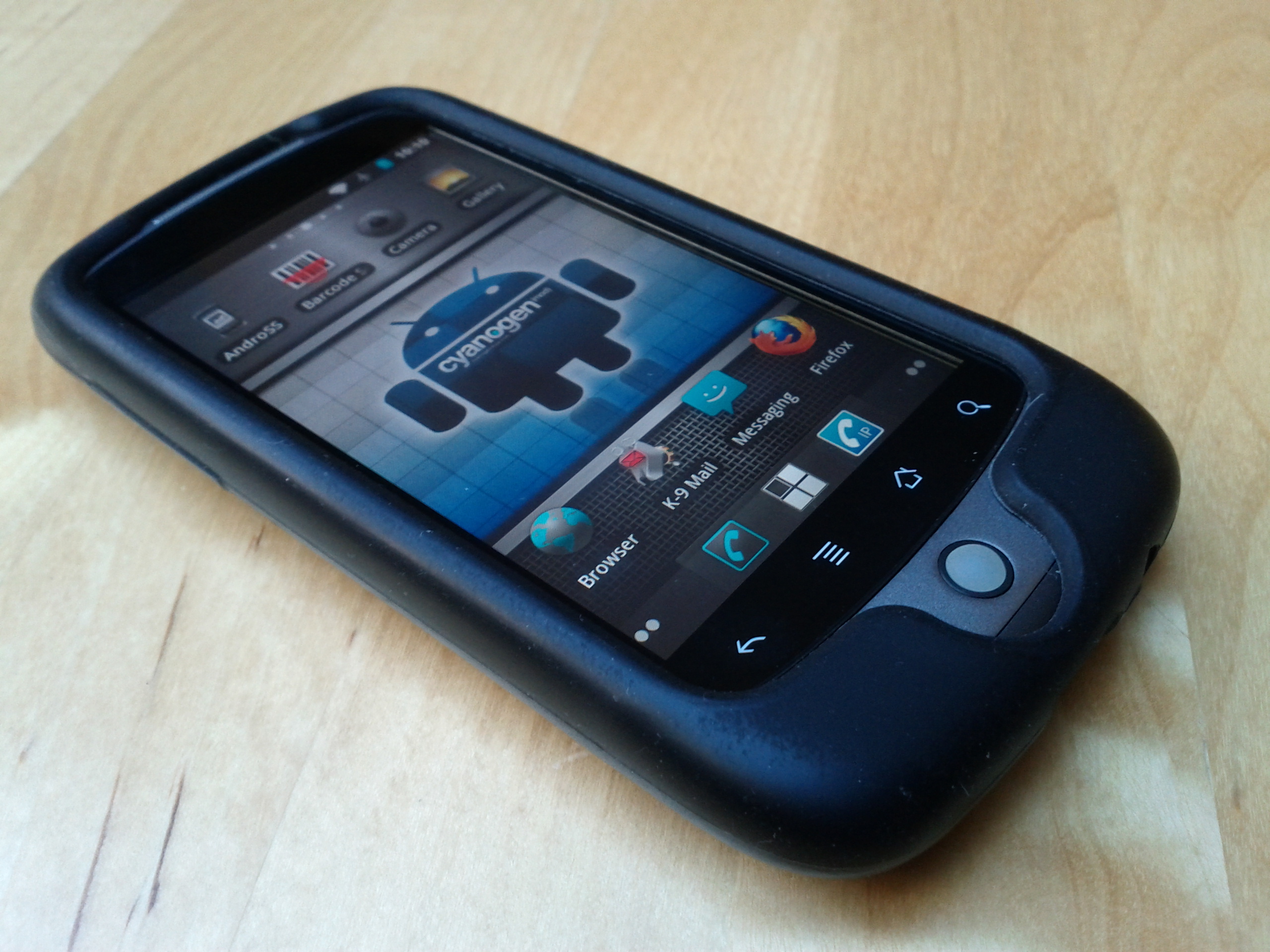
As a first Android device you could certainly do a lot worse than HTC’s G5 Google’s Nexus One. Mine is still in use as my girlfriend’s daily driver.
It all started out as a test, of not only Android but a new Canadian carrier as well. That fellow N97 24/7 alum Jonathan Bruha had already jumped ship to this same device put me at ease somewhat.
Though Android was orders of magnitude easier than Symbian to set up and use there were definitely a few things lacking in terms of utility. For example, in order to grab this screen from my N1 I had to download and install the Android SDK.
Considerably more effort was required to set up my computer to root the damn thing and flash a custom recovery image. Nexus phones are made for this, of course, but it was still a daunting task for a n00b like me. It took me an entire day to get my Nexus recognized by my computer via fastboot.
But man, was it ever worth it. Just like distro-hopping on my Linux computers I could now change ROMs on my phone at will. Mind blown.
In no short order I installed Replicant (needs work), CyanogenMod (amazing) and MIUI, which my girlfriend swears by to this very day. In fact, I had to pry the N1 from her hands just to grab that third screen!
]]>
Here it is, the infamous N97. It wasn’t Nokia’s first touchscreen device, but it was the first to show an obvious iPhone influence — namely the chrome bezel around the perimeter of the device.
The hidden qwerty keypad was an obvious advantage over Apple. As for the touch factor, the N97 was finger-friendly on the home screen widgets but less so elsewhere — explaining the “one foot in the past” stylus that was included in the box.
Nevermind that the N97 was kind of a dud; it provided me with a once in a lifetime opportunity to take one with me across the USA in July of 2009. The video above is an 11-minute compilation of that two-week tour; I just dropped in some appropriate music.
Note that if the video quality looks like crap it’s because the source material is QVGA — not sure why Vimeo won’t let me embed it at its native resolution…
In December of that year I would finally get an N97 to call my own, courtesy of a contest run by Qik. Unfortunately by this time I was using a non-touch Nseries as my daily driver.
I did manage my first-ever S60 phone hack, though — faithfully following the instructions of other, more clever N97 users.
]]>
Here’s my S60-powered Nokia E61i, resplendent in its cheap and cheerful crystal case.
As you can see from this photo opp in front of a Fido van (for some long-since forgotten campaign) I was pretty happy with this Eseries device. In many ways it was a culmination of every smartphone I had owned prior. It was sturdy, like any other Nokia. It had a qwerty keypad worthy of a BlackBerry or hiptop. And like my TyTN it supported 3G and WiFi.
The 3G only worked in Europe and Asia, though — good thing, because Fido’s data service at the time was laughable. $10 CAD/month sounds entirely reasonable, but in 2007 it was good for a mere 12 MB of data. If that sounds bad, I was previously paying $25/month for 3 MB!
It works in Japan! Here’s a photo of the famous Shibuya Crossing, taken with the E61i’s 2 megapixel camera — not bad for a night shot with a 2007-vintage camera phone.
The E61i proved its mettle as a travel companion almost immediately on a trip to New Zealand. In addition to Tokyo it also accompanied me to such faraway places as Buenos Aires and Egypt. For the longest time I couldn’t figure out why my blog posts about the latter were getting so many hits — until I finally learned that the Bluetooth GPS accessory I had brought to Cairo with me was, in fact, illegal. Oops.
]]>HTC was a Taiwanese company that had previously made branded devices for others, most famously the Treo 650 and Compaq iPAQ. The TyTN was not their first Windows Mobile product, but the first to bear the company’s name. And it was fairly spectacular for the times. It was the first phone that I could use in Canada with 3G data service, offering download and upload speeds at least twice as fast as the then-current standards. Added to that was a WiFi radio, letting me hop on to a wireless Internet connection without using cellular data at all. All this plus an extra camera on the front of the phone meant that for the first time I could make voice and video calls using Skype, in flagrant disregard for whatever limitations I had on my calling plan. This was disruptive technology at its very best.
As you can imagine, this premium product had a premium price tag to match. My carrier hadn’t even heard of it, but I found a small local shop that specialized in importing super-high-powered phones from Europe. They could get me a TyTN, but it would set me back eleven hundred bucks. Flush with cash from my first professional contract as a theatre director, I placed my order.
My time with the TyTN was bittersweet. Perhaps its star turn was the nine days it spent with me in Seoul to ring in 2007. I received a “welcome to Korea” text from Fido the moment I powered it up upon arrival at Incheon Airport, and HTC’s flagship fit right in with the super-high-powered phones that the locals were using. My TyTn even got a compliment from the staff at my hotel.
But it was an altogether different story on a trip to Bermuda later that spring. I realized how dim the TyTN’s touch-screen display was when I couldn’t read texts or even see who was calling me in the bright island sunlight. Worse was battery life; with both 3G and WiFi radios turned on I can remember going from a full charge to empty in the space of a twenty-minute cab ride. This TyTN clearly needed much more power than its relatively small battery could provide.
Ultimately the TyTN’s downfall wasn’t the device itself but the desktop operating system it was tied to. I appreciated the push-email capabilities of Microsoft’s Exchange but I despised Outlook on my Windows laptop — so much so that I went back to my hiptop, dumped the Windows laptop for an Apple one and banished my TyTN to the dark recesses of my desk drawer. Then I gave it to a friend. Then he never used it and gave it back to me. Then I gave it to someone else. Then she dropped it in the toilet.
An inglorious end to a titan of smartphones.
]]>

